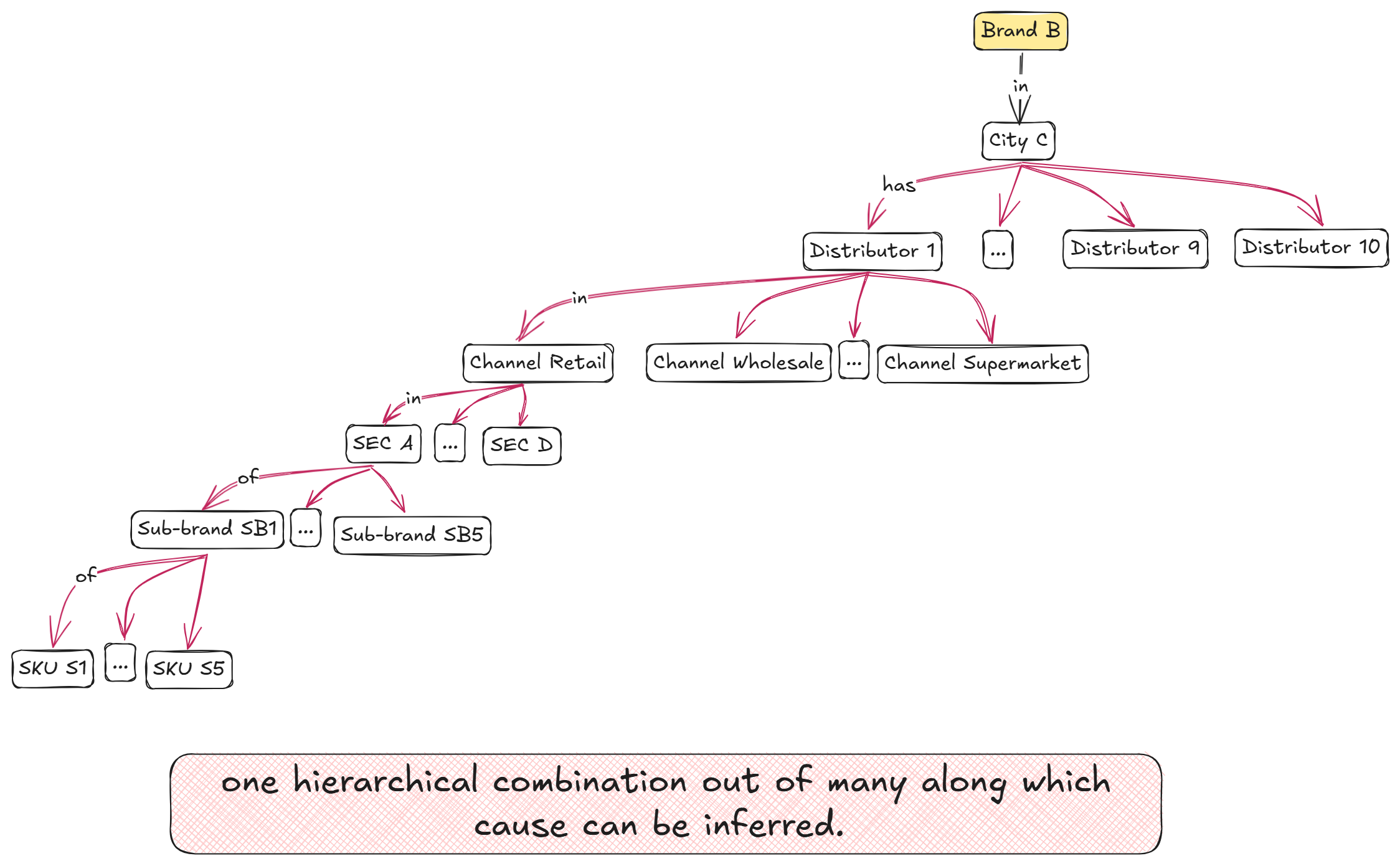Employed Causal Inference And Root Cause Analysis Techniques To Explain Sales Variability Across Different Product Categories, Regions, And Time Periods, Utilizing Large-Scale Fmcg Sales Data.
Causal Inference & Root Cause Analysis
In FMCG world when sales of come entity (shop, brand, sku, distributor, etc. ) drop, it can be traced via million of combinations and hierarchies. We use human-in-the-loop (HITL) way to reduce the number of combinations in which sales can be traced and root cause can be found.
Example
Our system generated an alert that sales of an entity consider it a Brand B dropped in a City C November,2024 as compared to October,2024.
Following is an example of small supposed dataset to explain the possible hierarchies of combinations along which cause can be look for,
City Chas 10Distributor in it.- 10,000
ShopsinCity Care sellingBrand B. - The shops belongs to 5
Channels(Retail, Wholesales, Superstores, etc.), 4Socio-economic classes(A, B, C, D) and 3Population density areas. Brand Bhas 5Sub-brandsand each sub-brand has 4Skus- There are many more company specific elements which are included in these hierarchies.
Possible combinations for above small dataset is in millions. For example you can look for change in Channel inside a Socio-economic class or you can do vice versa.

FMCG data which almost comes in tabular form is enough to infer many things but to make sense of what chain of combination to analyze requires one to understand how a FMCG entities (shop, brands, distributor, etc.) work and interact with each other in real world. We incorporate FMCG real world working model and apply external knowledge to our pipelines. There are things which solely data cant provide like how distributor works to optimize the distribution of products, why a product sold more in certain socio-economic class, why a product belong to a certain season, why we see sales dumps on certain date in a year and many more. We apply much more of this information available to our technical stack via our business team which collect such data from the market and provide to the system.

